February 13, 2004
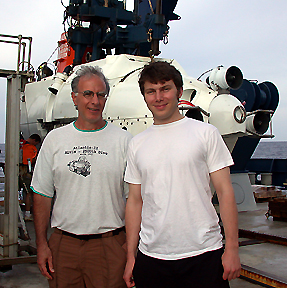
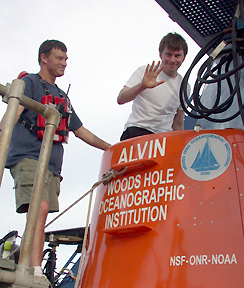
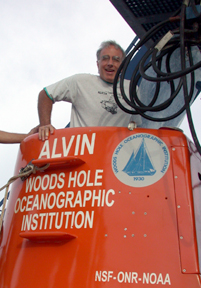
John Maclennan (right) and Mike Perfit dove in Alvin today to observe and take samples from small volcanic cones that appear to have erupted away from the EPR axis. It was John's first dive. Today's journal was written by him of his experience.
Today was one of the most exciting days of my life. It was the day of my first dive with Alvin to see volcanoes at the bottom of the sea! Pat Hickey was the pilot, Mike Perfit the port observer, and I was the lowly starboard observer and a total novice. Last night I kept on saying that it felt like Christmas Eve because I was so worked up about the big day to follow. I may even have mentioned something about expecting to open presents the next morning. At the time I hadn’t the faintest inkling how those throwaway comments were going to come back to haunt me in the submarine.
I got up at six and found the hardworking and good humoured overnight camera tow team out watching the sunrise. I look a long look out over the Pacific and pondered the important questions of the day. I was principally worried about whether taking morning coffee was a good idea or not. You see, I was about to be sealed up in a cramped 6 foot diameter sphere for 7 hours. I went caffeine free.
We were soon climbing into Alvin, waving goodbye to a crowd of well-wishers and all their snappy cameras. We settled into our positions in the sub, with the two scientists sitting kicking each other while the pilot was busy getting ready for launch. And then, in an instant, we were in the water and at the start of our hour long, 2600 metre descent to the sea-floor. The aim of our dive was to examine a series of pillow mounds located about 2 km to the east of the ridge axis at about 9°30’N. These mounds had been imaged by a sonar survey, and appear to be covering over faults that have grown between the ridge axis and the mounds. One simple interpretation of this geological arrangement is that the pillow mounds have formed away from the main locus of eruption at the axis. We wanted to verify the sonar observations, to attempt to ascertain the age relationships between the pillow mounds and the surrounding flows and, most importantly, to pick up some really huge samples of rock.
We started to discuss the finer points of our dive plan, and Mike casually began to open up his observer bag, which had been placed in the submarine earlier in the morning. I decided to follow suit, being the novice. I noticed with interest that my bag was much larger than I had remembered it being the night before. I untied the first large bag to find a slightly smaller bag inside. And then I did the same thing again, and again, and again….until after about 6 bags had been opened I made it to my pens and paper. It seems that some kindly souls had decided that my first dive really needed to see me unwrapping presents! Many thanks to you, whoever you are.
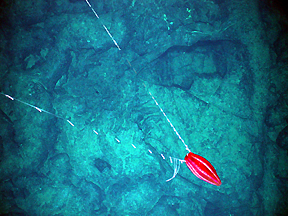 A beautiful, ruby colored Ctenophore, a deep sea jelly,
was caught by the TowCam during its imaging traverse last night. The tentacles
likely were caught in the plastic mesh of the camera frame.
A beautiful, ruby colored Ctenophore, a deep sea jelly,
was caught by the TowCam during its imaging traverse last night. The tentacles
likely were caught in the plastic mesh of the camera frame.
Then as we approached the seafloor Pat turned on the lights and told me to look out of the window, and, low and behold, there it was – basalt. Lots of basalt. The next five hours flew by as we glided over the seafloor, starting to map out the mounds and fissures and collecting all those samples that we wanted to. Pat’s skill and efficiency in taking samples in tricky spots is really quite breathtaking.
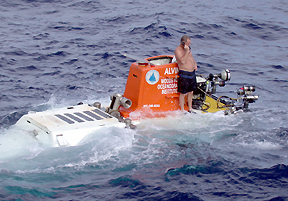
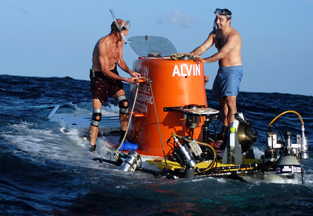
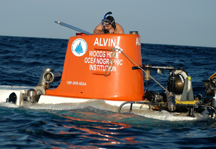
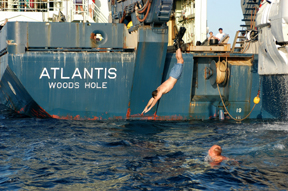
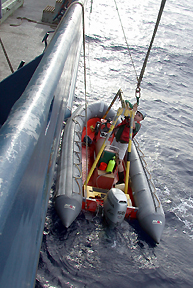
We couldn't do our work here in the middle of the ocean without the great crew of R/V Atlantis and the Alvin Group. They make the difficult job of launching and recovering the submarine seem routine... and fun!
It took another hour for the sub to come to the surface, and then I got covered in ice like all the newbees. It was a refreshing experience, a successful dive and a super day. I can’t wait until the next one…
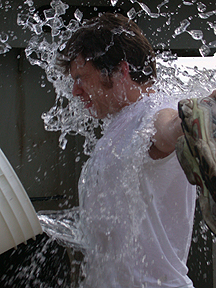
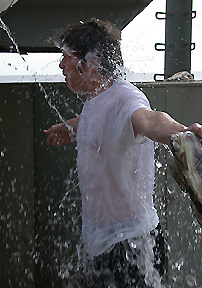

John Maclennan getting doused after his Alvin dive.

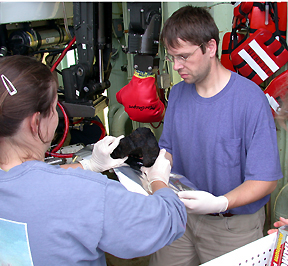
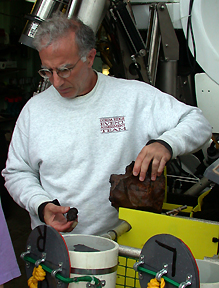
Ryan Perfit and his Dad Mike before Mike "went to the office" at the bottom of the ocean today. Ryan has been a valued member of the TowCam rock core team and has helped maintain the system's battery power and winches, in addition to helping each night put the web site together. Middle photo shows Wolfgang Bach and Cara Santelli recovering their samples that were brought up from the seafloor today. Right photos shows Mike handing the samples to the Rock Team and telling them which station it came from.
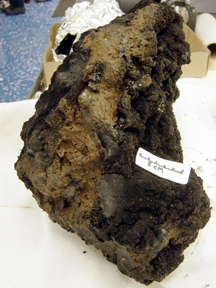
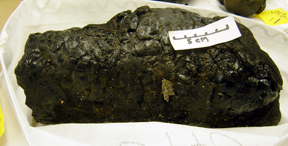 Some
of the contrasting rocks collected today. The one on the left is much
older looking with a thick manganese oxide coating. The one one the right
is from a pillow mound and has much less manganese and fresher looking
volcanic glass.
Some
of the contrasting rocks collected today. The one on the left is much
older looking with a thick manganese oxide coating. The one one the right
is from a pillow mound and has much less manganese and fresher looking
volcanic glass.
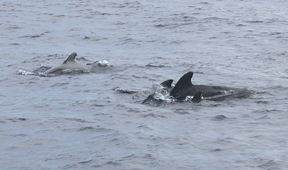
While it may be Friday the 13th..., the pod of pilot whales
that visited Atlantis and Alvin this afternoon were taken as a good omen
and are a measure of the success we've had so far during the expedition
with our research work. Thanks to all the great dedication and help from
the R/V Atlantis officers and crew and the Pilots and Operations Team
of Alvin.
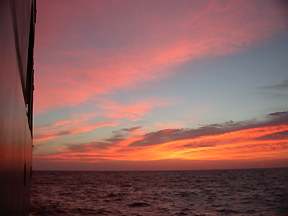 Another beautiful sunrise. Only 5 more days on station
and then we start our transit to Puntarenas.
Another beautiful sunrise. Only 5 more days on station
and then we start our transit to Puntarenas.